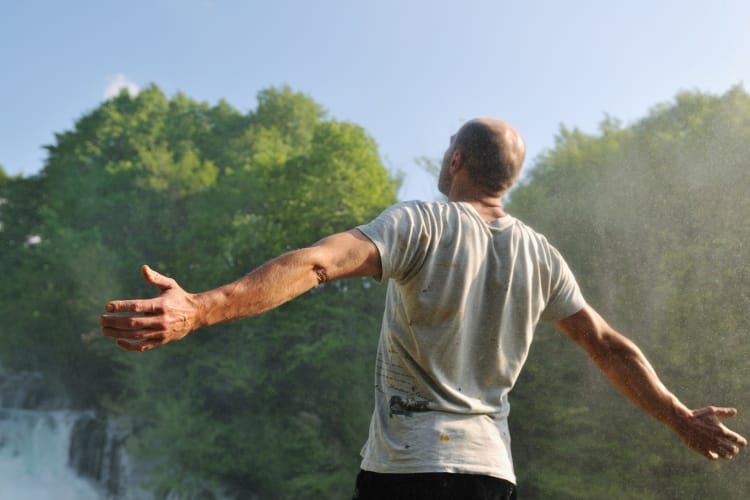6 Tips for Finding Strength to Heal

by Susan Luschas
The Struggle to Find Healing Is Real
People are taught to go to the doctor when sick. They do exactly as the doctor says.
However, what happens when they still don’t get better?
Many chronic illnesses have no cure. Illnesses such as chronic fatigue syndrome, Lyme disease, migraines, arthritis, and seizures can leave a patient unable to function, work, and live a full life. As a result, doctors manage symptoms, keeping the person as comfortable as possible.
A Will to Live Fully – The “Radical Remissers”
So, what happens to the people who are determined to get better? You know, the ones who brainstorm their own ideas, consult with Dr. Google, and have a strong will to live life fully?
The work of Dr. Kelly Turner on ‘Radical Remission’ from cancer offers some insight. She studied late-stage cancer patients who were sent home to die. Below is a summary of the nine hypotheses, or common themes, of how these patients healed themselves:
- Strong reasons for living
- Taking control of their own health & healing
- Social support
- Dietary changes
- Herbs & Supplements – detox, digestion, immune boosters
- Intuition
- Releasing suppressed emotions
- Increasing positive emotions
- Deepening spiritual connection
Most noteworthy is the number-two commonality Dr. Turner found, ‘Taking Control of Their Own Health & Healing.’ –But how?
6 Tips for Finding Strength
Finding Strength Tip #1 – Calm Fear and Anxiety
First of all, fear and anxiety compromise thinking, paralyze the mind with second-guessing and close the pathway to inner intuition. Mindfulness and loving-kindness meditation can calm this fear and anxiety. Below are some additional health-promoting mantras:
“I am healthy and strong.”
“I always look forward to wonderful future events and experiences, and I have them.”
Finding Strength Tip #2 – Practice Gratitude
Gratitude brings forward blessings that are already present. In addition, gratitude is an acquired skill that takes practice. Sociologist Christine Carter, PhD, offers some practical ideas for practicing gratitude:
~ Write a thank-you letter.
~ Savor good news, replaying and reveling in happy moments.
~ Before bed, think of three good things that happened during the day.
Finding Strength Tip #3 – Do Something Enjoyable Every Day
No matter how sick one may feel, do something fun. It could be taking a walk, gardening, watching a new movie, or even spending time talking to a friend.
Finding Strength Tip # 4 – Release Suppressed Emotions
Suppressed emotions can not only hinder healing, they can hinder self-esteem and sense of self-worth.
How can we release suppressed emotions? There are many different paths to emotional release. The author’s favorites are Neural Emotional Technique (NET) and Dr. Lee Cowden’s “Raging Process.”
Since Dr. Cowden’s “Raging Process” is not well known, here is a brief description (from the article of S. Forsgren in the Resources section):
“Close the eyes, visualize the face of the angering individual, and do a “shouting out loud” about all the things that person may have done and the feelings that resulted. Emotions are often released which leads to healing… Choose to forgive. Holding anger does not hurt anyone except the person holding it.”
Finding Strength Tip #5 – Find Spiritual Connection
Spiritual connection is close to finding faith. Faith in what? Ultimately, faith in oneself to take control of the healing process. –Where does one find spiritual connection? Religion might be an answer for some. For others, it might be stories, pictures, gardens, or anything inspirational.
Finding Strength Tip #6 – Avoid ‘Illness Behavior’
Often, the chronically ill can fall into depression, anxiety, or what is commonly called, ‘illness behavior.’ Illness behavior refers to identifying oneself with the illness. The whole sense of self, online and offline, is the illness.
The identity of self as independent from illness must be maintained. A psychiatrist visit is one idea to help ensure that this is true.
A Final Word of Encouragement
The power to heal is within everyone. Healing might be ugly, painful, and difficult. Finding the strength to trust oneself ensures the healing path will become illuminated.
Resources:
Turner, Kelly PhD. “Radical Remission Surviving Cancer Against All Odds” HarperOne, 2014.
Carter, Christine PhD. “The Sweet Spot,” Ballantine Books, New York, 2015.
Erika Lawrence PhD, “The Impact of Chronic Illness on the Family,” IG Living, June-July 2012, pp. 21-25.
Jane Turner and Brian Kelly, “Emotional dimensions of chronic disease,” Western Journal of Medicine. Vol. 172 (2) (Feb 2000): p. 124-128.Roy Eugene Davis, “Guidelines to Inspired Living,” Truth Journal, Feb-March 2016, pp. 16-17.
Deepak Chopra MD, “How Meditation Can Help Anxiety.”
Susan Luschas, PhD “Social and Emotional Aspects of Healing,” May 29, 2016.
Susan Luschas, PhD “Lyme Disease Cure,” July 26, 2016.
Scott Forsgren, “Expanded Treatment Focus Markedly Improves Lyme Disease Patient Out….” Public Health Alert, 2008. (Dr. Lee Cowden’s Raging Process is on page 6.)
About the Author
Susan Luschas, PhD, is an MIT-trained scientist and engineer. She had to find the strength to solve her family’s chronic health issues after no practitioners could. This process drastically transformed her awareness and relationships. In 2016, she published everything she learned, for free, on the website Debug Your Health. http://www.debugyourhealth.com
OMTimes Magazine is one of the leading on-line content providers of positivity, wellness and personal empowerment. OMTimes Magazine - Co-Creating a More Conscious Reality









